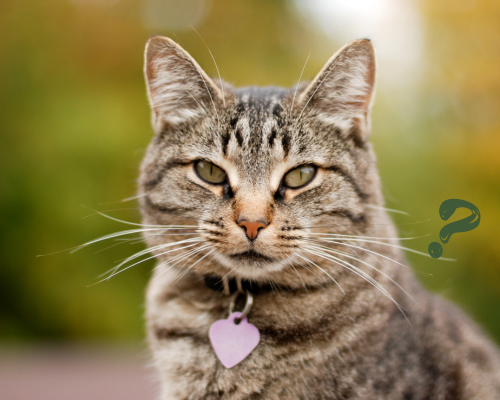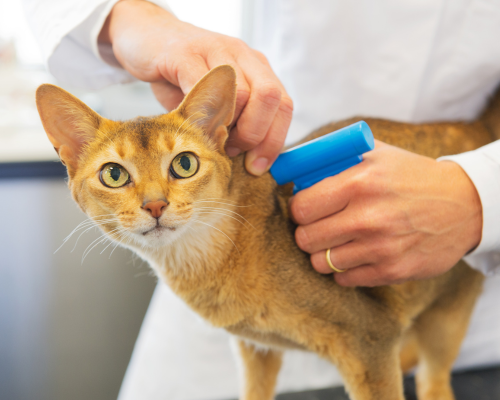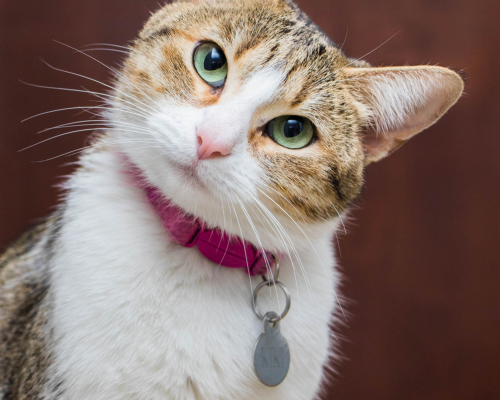Should Cats Wear Collars? Everything You Need To Know!
Should Cats Wear Collars? Everything You Need To Know!

Vet Reviewed

By: Sarah Hodgson
June 14, 2023
- Posted in Cats
Table of Contents
Keeping track of your cat is important. What if they get lost? How will someone identify the cat belonging to you? So, most dogs have collars some have even started getting microchipped.
But for cats, what's the best option? Is it Collars? Are they even safe? Some support the idea that collars are unnecessary and potentially harmful. Others argue that collars are essential for the safety and identification of cats.
Well in this article we're going to explore both perspectives, providing you with the information you need to make the best decision for your cat. Let's dive in!
Quick Answer:
It comes down to preference. Cat collars are safe and provide advantages over alternatives such as microchipping. Providing immediate contact information but can also get lost. It comes down to what you want to go with as both options are great and provide their own specific advantages.
Should Cats Wear Collars?
There is a group of cat owners who would not recommend putting a collar on their cat. Their reasoning? The collar could easily get lost or come off, rendering it useless. Moreover, some believe that collars might pose a risk to the cat, causing discomfort or even injury. For these individuals, the solution to the problem of identification lies not in a piece of fabric around the cat's neck but in a tiny device implanted under the cat's skin. This is known as microchipping.
About Microchipping
Microchipping your cat is a straightforward procedure that can be carried out by a vet. The chip, which is about the size of a grain of rice, is inserted under the skin in the back of the cat's neck. Each chip has a unique number that can be read by a scanner. This, combined with your contact details, which are kept on a central database, means you can be reunited with your cat if they ever get lost. A microchip will always be there to identify your cat, even if a collar comes off or gets lost.

The Importance of Cat Collars
Despite the concerns raised by some, there are others who argue that collars play a crucial role in cat ownership. For one, a collar immediately identifies a cat as a pet and not a stray. Furthermore, if your cat is lost, a collar can provide vital contact information which in return will get you in contact with your cat fast if someone finds them with a collar.
In addition to identification, cat collars can also play a role in the safety of your cat. Reflective or brightly colored collars can make your cat more visible, especially at night, helping to prevent accidents. Also, certain collars come equipped with bells which can alert birds and other wildlife of your cat’s approach.
Risks Associated with Cat Collars
While there are benefits to cats wearing collars, it is important to acknowledge the potential risks as well. One of the main concerns is the risk of injury. If a collar is too tight, it can cause discomfort and restrict a cat's breathing. Conversely, if it's too loose, a cat might get its paw or jaw stuck in the collar, leading to panic and potential injury.
Another risk is that, if a cat's collar gets caught on something, it could lead to strangulation. While this is a worst-case scenario, it is a possibility that pet owners should be aware of. It is also worth noting that some cats might experience skin irritation, hair loss, or allergies due to the material of the collar.
Advantages of Cat Collars
Despite the risks, many believe that the benefits of cat collars outweigh the potential concerns. A collar provides immediate contact information should your cat get lost. While microchips can provide the same information, not everyone has access to a microchip scanner. A collar with an ID tag can thus expedite the process of reuniting a lost cat with its owner.
Moreover, a collar can help make your cat more visible at night. Many collars come in reflective or glow-in-the-dark materials. This can help prevent accidents, as drivers can spot a cat crossing the road in the dark. Additionally, a bell on a collar can serve as a warning to birds and other small animals when your cat is nearby, potentially saving their lives.

Are Cat Collars Safe?
Well, cat collars are designed with the safety and comfort of our cats in mind. They're typically equipped with breakaway buckles or elastic segments. What does that mean? Well, it’s absolutely genius! If your adventurous kitty gets their collar caught on, say, a tree branch or a fence while exploring the great outdoors, these safety features will allow the collar to easily snap open or stretch so your cat can safely escape. This dramatically reduces the risk of any injury or unfortunate accidents.
Keep In Mind:
Note
A collar that is too tight can be uncomfortable and harmful, while one that is too loose may get caught in objects more easily. As a rule of thumb, you should be able to fit two fingers between your cat's neck and the collar comfortably.
Tips for Choosing the Right Collar
When it comes to choosing the right collar for your cat, comfort and safety should be the top priorities as well as the brand of the collar. Here are some tips that can help.
- Ensure that the collar is not too tight by making sure you can fit two fingers between the collar and your cat's neck.
- It's also important to choose a collar with an easy-release or breakaway clasp. This type of clasp will allow the collar to come undone if it gets caught on something, minimizing the risk of injury.
- Material is another important factor to consider. Choose a collar made from a durable yet comfortable material such as nylon or soft leather.
- It's also a good idea to pick a collar that is easily visible, such as one made from reflective material or in a bright color.
How to Accustom Your Cat to a Collar
Introducing a collar to your cat should be a gradual process.
Start by letting your cat sniff and investigate the collar. After your cat seems comfortable with the collar, put it on them for short periods, gradually increasing the time as your cat gets used to the feeling. Reward your cat with praise and treats to create a positive association with the collar. Be patient and remember that it might take some time for your cat to fully accept their new accessory.

Can Cats Wear Dog Collars?
While it might be tempting to use a spare dog collar for your cat, it's not recommended. Dog collars are typically heavier and bulkier than cat collars, which can cause discomfort for cats. Additionally, most dog collars do not have a quick-release or breakaway clasp, which is an essential safety feature for cat collars. Always choose a collar that is designed specifically for cats.
The Bottom Line: To Collar or Not to Collar?
Whether or not to collar your cat is a decision that ultimately comes down to personal preference and the specific needs of your cat. There are valid arguments on both sides of the debate. Some owners swear by microchipping as a safer and more reliable form of identification, while others believe that the immediate visibility of a collar and ID tag is crucial.
In the end, it's about weighing the benefits and risks and making the best decision for your feline friend. If you do decide to go with a collar, remember to choose one that is comfortable, safe, and suitable for your cat. And always monitor your cat's behavior and comfort levels to ensure they are happy and safe with their collar.

Subscribe to Petfluence!
Get updates on the latest posts and more from Petfluence straight to your inbox.